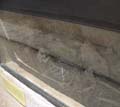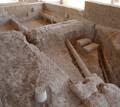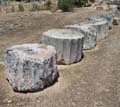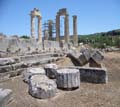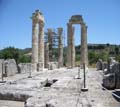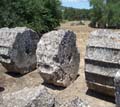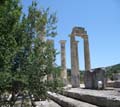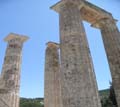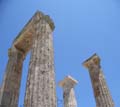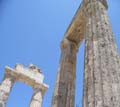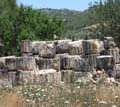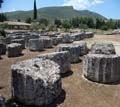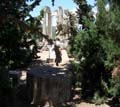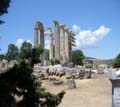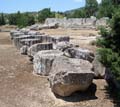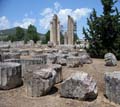
The Sanctuary of Nemea was known throughout Greece for the Nemea (or Nemeia), sporting and religious events in honor of Zeus that were held every two years, Hekatombaeon (June 23-July 23). The first matches took place in 573 BC. when Nemea belonged to the city-state of the ancient Cleons. Tradition has it that the king of Argos Adrastus, during the campaign of the Seven against Thebes, founded Nemea to honor the young Opheltes, son of the king of Nemea Lycurgus, who died young. It is also likely that Nemea was founded by Heracles in commemoration of his victory over the Nemean Lion. Since 270 BC, Nemea belongs to the city of Argos, which takes over the holding of the games. A truce prevailed during the equestrian and nudist competitions. After the sacrifice to Nemean Zeus, it was the beginning of the Games which included various sports such as stadium, dolichos, equestrian road, hoplite road, wrestling, boxing, pancratium, pentathlon, chariot. The prize of the winners was a wreath of green celery.
The first Temple of Zeus (44.5x22 m.) dates back to the Archaic era, while the one still visible today was built at the end of the 4th century BC (around 330 BC) together with other buildings (Bath , Stadium, Hostel). The temple (made of porolith) is rectangular, Doric style, with pronaos and adytos. To the east of the temple is the Altar of Zeus for animal sacrifices, while south of the altar were the Houses (5th BC), buildings used as embassies by Epidaurus and Rhodes. To the south of the temple was found a two-storey Guest House (for the athletes) and to the west a Bath (for the needs of the athletes). To the south of the Guest House there are residences that were used by the staff of the Games, the priests, the caretakers, etc. The Stadium, with a capacity of 40,000 spectators, is located southeast of the temple.
Editor: Fotini Anastasopoulou










